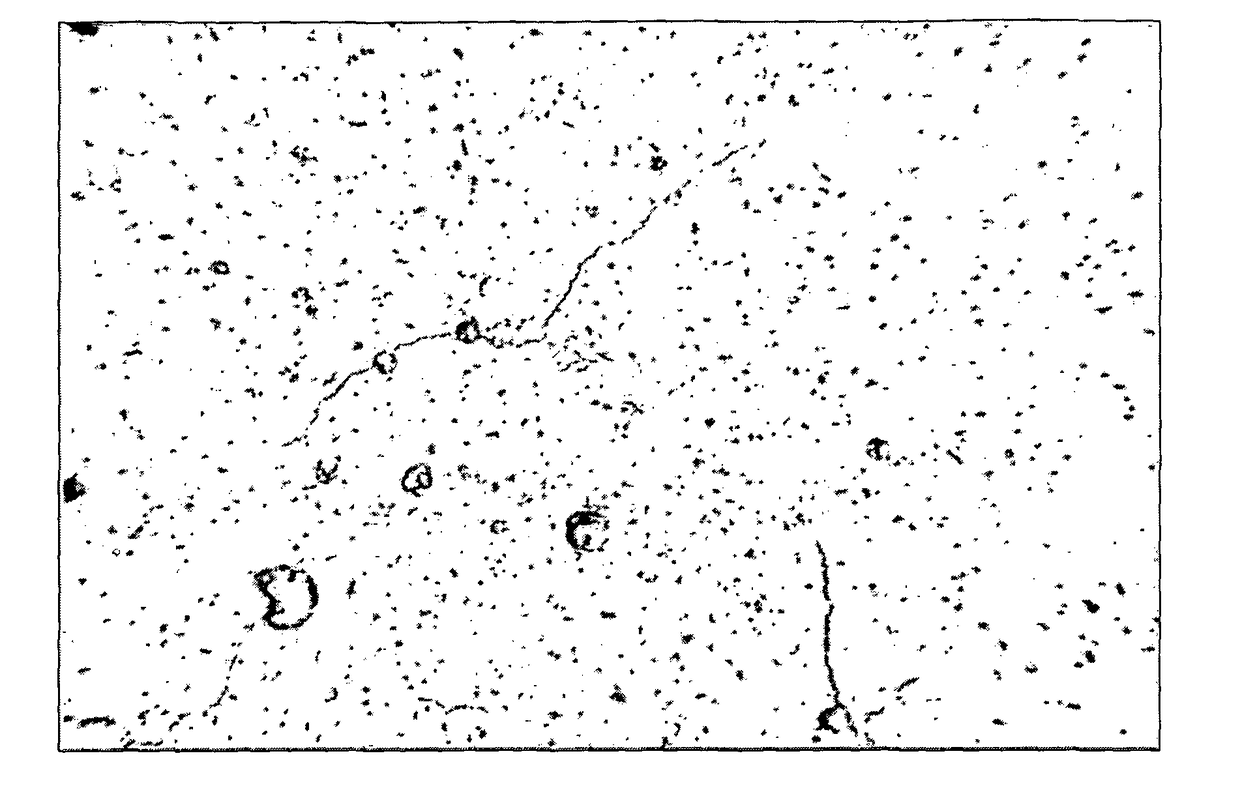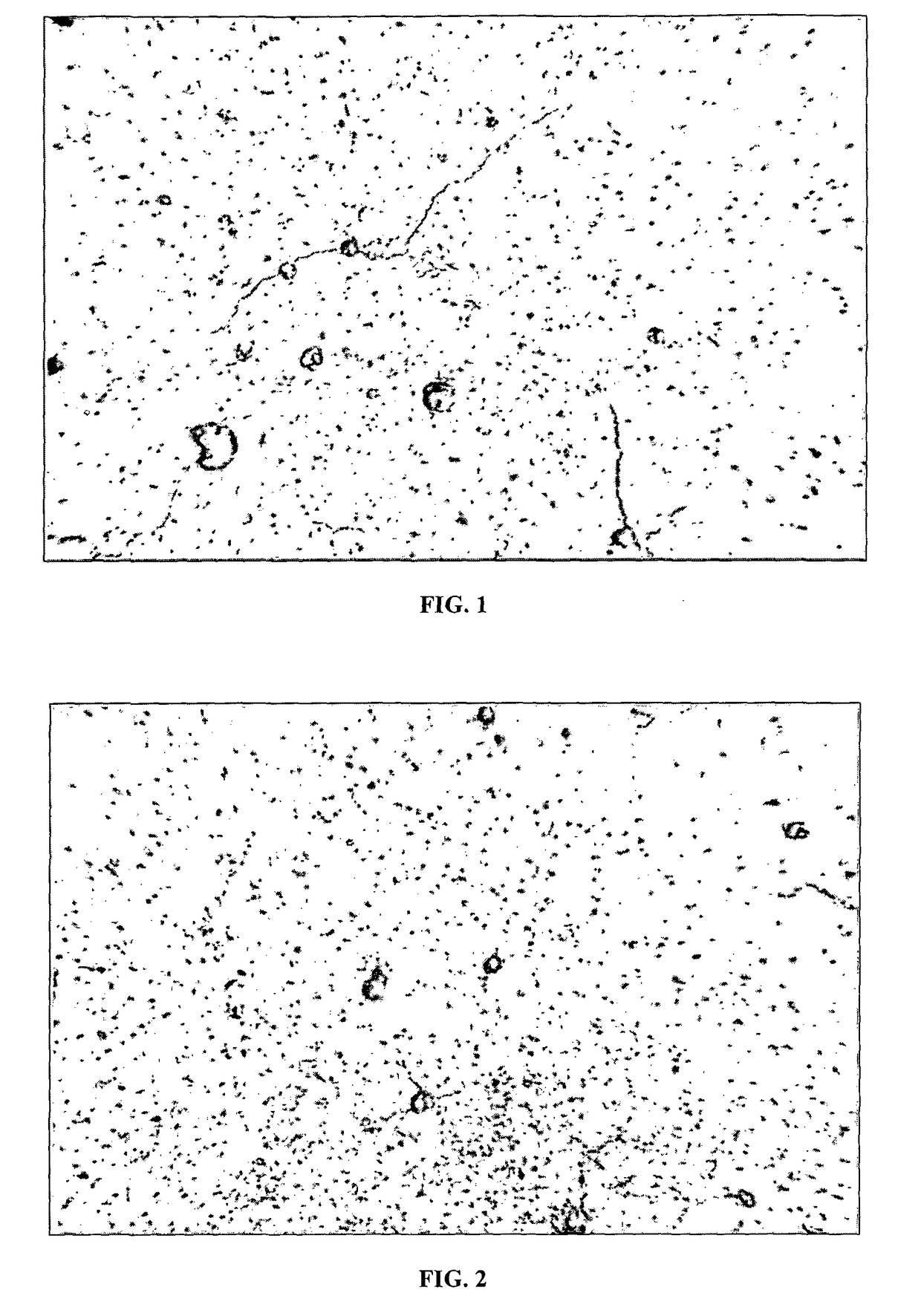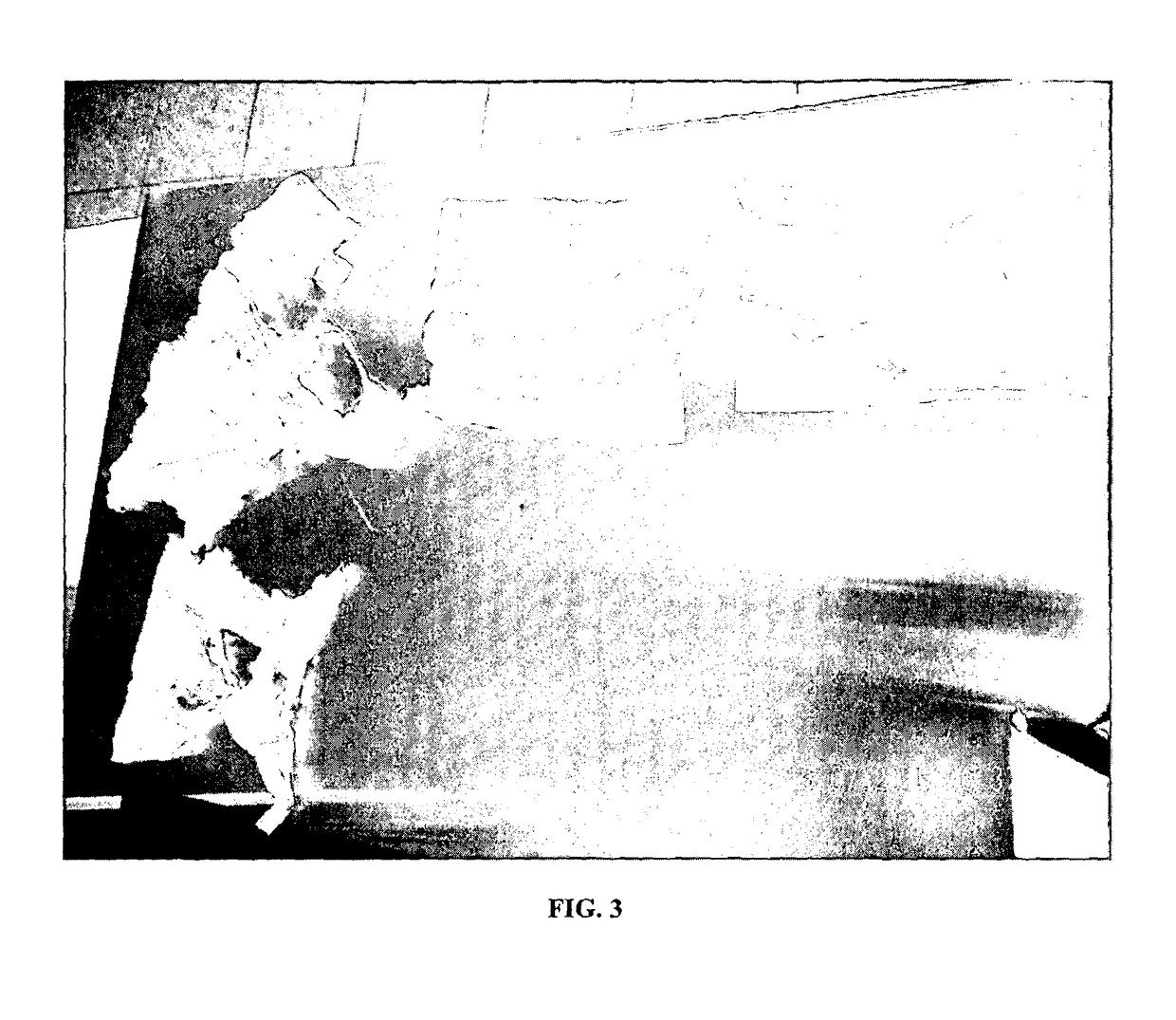Uses of melanin in water
- Summary
- Abstract
- Description
- Claims
- Application Information
AI Technical Summary
Benefits of technology
Problems solved by technology
Method used
Image
Examples
experiment 1
[0047]Glucose was obtained from bicarbonate by placing a relatively small melanin form in a 1% to 10% bicarbonate aqueous solution. The melanin form was created by embedding melanin in a mixture of calcium and silica, avoiding the presence of hydroxyl ions, in a ratio of 70% by volume calcium and silica to 30% by volume of an aqueous solution of 3% melanin. Numerous such sample assemblies were prepared. After soaking the small melanin forms in the bicarbonate solution samples for approximately one hour, an increase of approximately 0.1 to 0.6 pH units was observed. However, it will be understood that the resulting increase in pH can be controlled by varying specific parameters, such as the size, shape and volume of the melanin form, and the pressure, temperature and initial glucose concentration of the water.
experiment 2
[0048]In another experiment, 1 cubic centimeter melanin forms were made using inert elements, such as silicon, silica, calcium, and / or aluminum. The melanin forms contained 1% of melanin by volume and 99% of inert material by volume. Ten such melanin forms were placed in a bicarbonate aqueous solution prepared by mixing 100 g of bicarbonate in 1600 mL of water. After 48 hours, glucose levels were measured to be an average of 8 g of glucose per 100 mL of water.
experiment 3
[0049]In another experiment, 1 cubic centimeter melanin forms of silica and calcium with a melanin material embedded therein were prepared as follows. A solution containing 3% by volume of melanin and two parts by volume of silica and calcium was prepared to form a solution containing 1% by volume of melanin and 99% by volume of inert material. The solution was then treated to enable evaporation of the water and subsequently solidified to create a melanin form. Nine such melanin forms were placed in a vessels each containing 250 mL of distilled water. Six vessels containing 250 mL of distilled water, but no melanin forms were also prepared as control samples. The pH of each water sample was measured periodically over a duration of 16 days, specifically every other day. Table 1 is a summary of pH measurements of the control samples. Table 2 is a summary of pH measurements of the distilled water samples with melanin forms contained therein, referred to herein as the experimental sampl...
PUM
 Login to View More
Login to View More Abstract
Description
Claims
Application Information
 Login to View More
Login to View More - R&D
- Intellectual Property
- Life Sciences
- Materials
- Tech Scout
- Unparalleled Data Quality
- Higher Quality Content
- 60% Fewer Hallucinations
Browse by: Latest US Patents, China's latest patents, Technical Efficacy Thesaurus, Application Domain, Technology Topic, Popular Technical Reports.
© 2025 PatSnap. All rights reserved.Legal|Privacy policy|Modern Slavery Act Transparency Statement|Sitemap|About US| Contact US: help@patsnap.com



